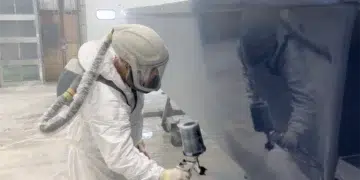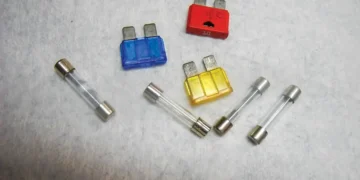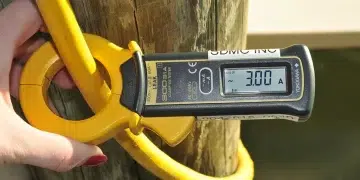DIY toilets, tanks, and hoses
There’s nothing like taking in the fresh air and sunshine as you walk down the dock to board your boat. But wait, what’s that smell? It sure isn’t the sea. Maybe it’s coming from your boat. So, let’s take a look at your onboard sewage system to DIY toilets, tanks, and hoses.
Toilets
Start with the marine toilet waste evacuation design, also called the head. Your marine toilet may use raw-water flush or freshwater, with pros and cons for each. Raw-water flush brings in the raw water that the boat is floating in—might be salty or maybe you are lake boating in freshwater. Some of that water may sit in the supply hose between the sea cock and toilet itself. That water may have microorganisms that died inside the hose since the last flush which may be the cause of your foul odor.
A simple way to solve the low tide smell is to race aboard the boat before your guests arrive and flush all the old water out of the system. Of course, an open window will help too.
Another solution is to convert to freshwater flush. This freshwater is supplied by the domestic water pump and consumes water from your potable water tank. But be aware, every time you flush your head you are adding water into the holding tank.
Also Read:
Increased Cruising Permit Fees – Bahamas’ New Rules Take Effect July 1
Updated July 31, 2025. If the Bahamas is on your cruising itinerary, pay attention: Starting July 1, 2025,...
Sanitary Hose Maintenance
Check your sanitary hoses as possible culprits of the odor. Maybe it’s not the actual water source, perhaps your hoses may be deteriorated. Consider how old they are and determine the need to replace them. Most sanitary sewage hoses are white rubberized plastic. A very hot heat gun can soften the hose to remove and replace it with ease. And you guessed it, these hoses are often snaked in through difficult locations. So how do you know it’s time to change your hoses?
You may be sniffing an under-the-floor odor that gets stronger when opening deck hatches. Observe the sanitary hose for discoloration. They should look clean and white, not stained a brownish-yellow color. Rub your hand across the hose fast enough to create a little heat then smell your hand. BINGO! You found the source of the odor.
Subscribe Here For More Boating Content
What Goes in Must Pump Out
Next in line for DIY maintenance is the holding tank. It is essential to know how much waste is in your holding tank. Many level gauges that we see aboard may not be trustworthy—even in a brand-new boat. The mechanical float might be stuck, or the electronic level sensor could be blinded by internal waste sludge. The black water or waste holding tank level gauge is notoriously the most troublesome gauge aboard the boat.
Gray and potable water tanks, along with gas or diesel fuel tanks, hold clean fluids so they usually do not have level gauge issues. If the gauge is fouled and does not show the true level, you’re in luck if you have a translucent tank. Try using a flashlight shined hard against the side wall of the tank to see the level.
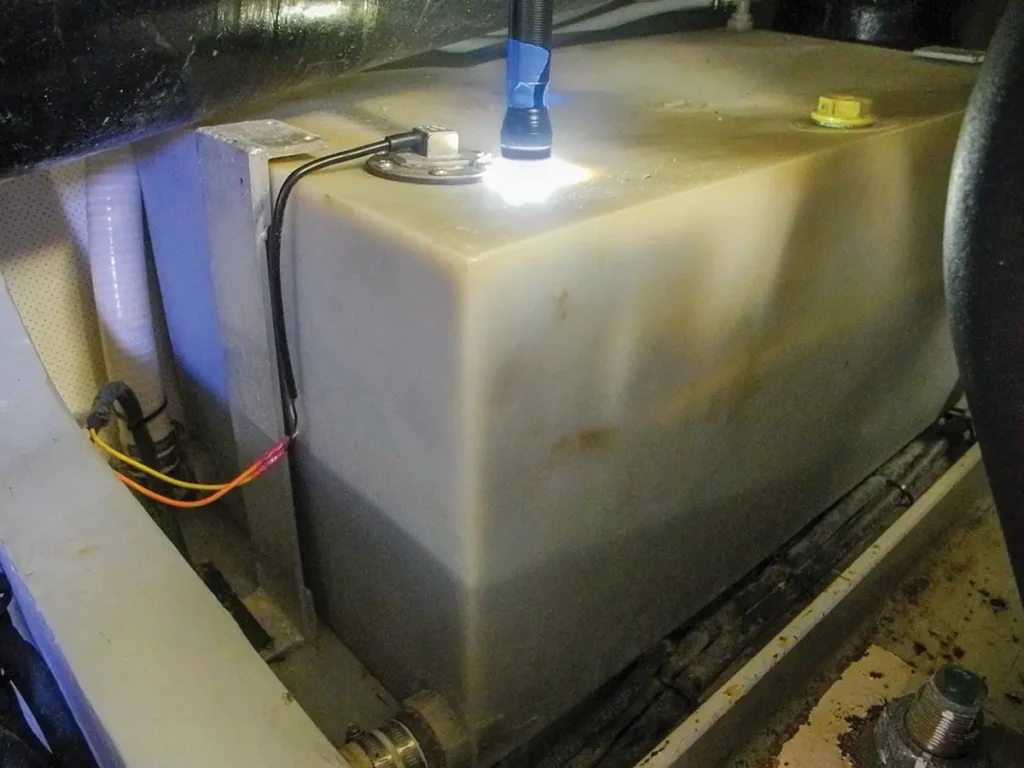
DIY Plumbing Problems
Look at the Y valve—the diverter valve that sends the waste to the holding tank. In many cruising boats, the Y valve may also send waste overboard within legal navigation limits. Check the interior diameter of the valve for calcium buildup. The interior diameter of the valve and hose may be restricted and no longer the proper size when everything was new. This can be an obvious clue as the reason your toilet may not flush toilet paper.
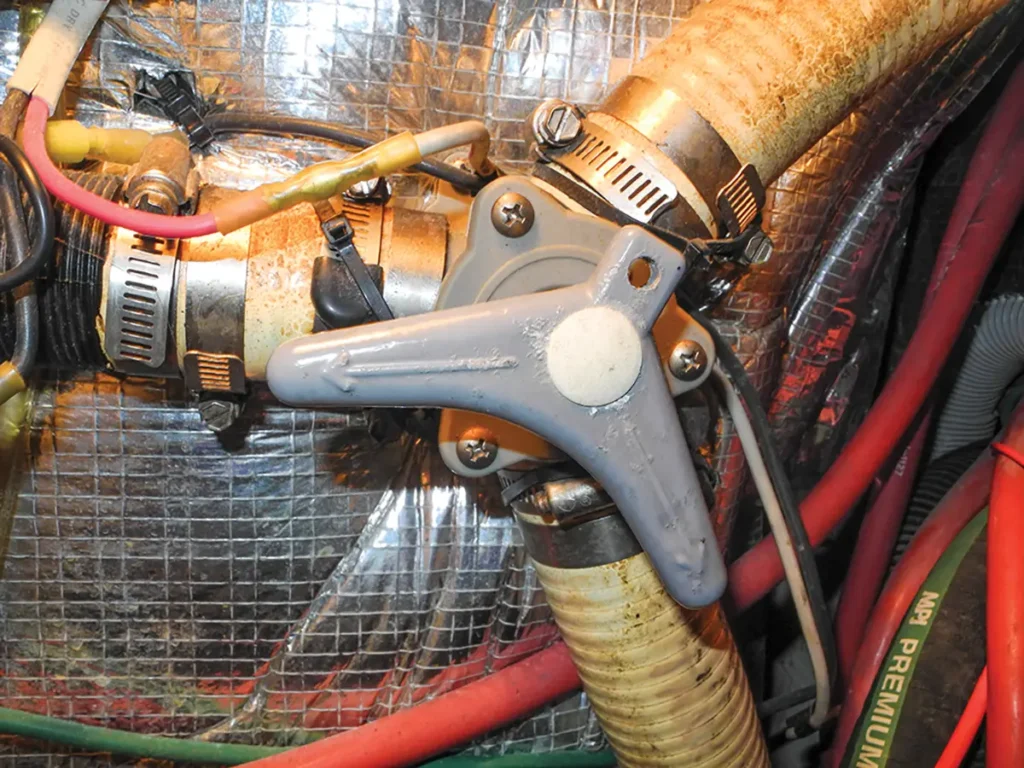
All marine and RV toilets are designed to flush RV or marine toilet paper. We use single-ply, septic-safe paper that dissolves easily. It will pass through the proper-sized sanitary hoses and valves and dissolve in the holding tank.
Treatment Helps
For a boat owner, here is an easy maintenance tip for your sewage system. Use a tank treatment chemical liquid that breaks down solid waste and odors. Be consistent after every pump-out. I prefer to pour the liquid in the toilet bowl and flush it through the hoses to the empty tank. Flushing the chemical through the toilet offers greater benefit by treating the hoses too. The chemicals slosh around in the empty tank cleaning the sludge and tank walls.
Take the boat for a cruise around the harbor to agitate the chemical and sludge to make sure bottom waste has been loosened for the next pump-out visit. This is preventive maintenance, not a repair procedure, and should be done every time the holding tank is pumped-out.
Also Read
Sport Express Cruiser Buyers’ Guide: 22 Standout Boats Going Into 2026
Performance and power come together in 22 versatile vessels. Quick Facts Coverage: 22 sport express cruisers across cats, CCs, jets,...
Air Vent
All fluid tanks have air vents to allow escaping air to vent when filling with a liquid. In the sewage tank, the air vent may become clogged. The most likely cause is from insects restricting the air venting out. Check this while at the dock or in a dinghy. If the air vent is not clear, the tank may puff or even rupture.
Prevention is the best medicine, and your head equipment is no exception to the rule.
-by Chris Caldwell






